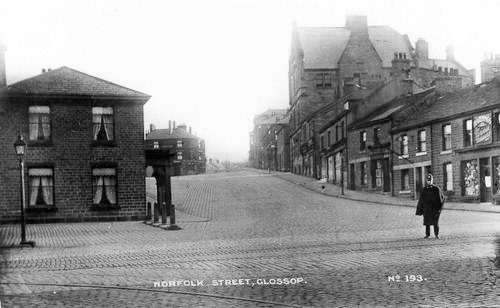
A view up Norfolk Street in the 1920s. |

A view up Norfolk Street in the 1920s. |
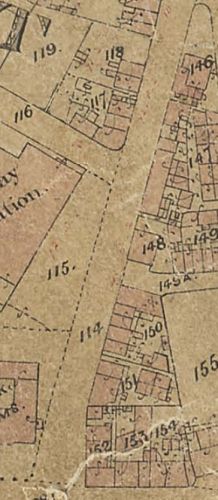
|
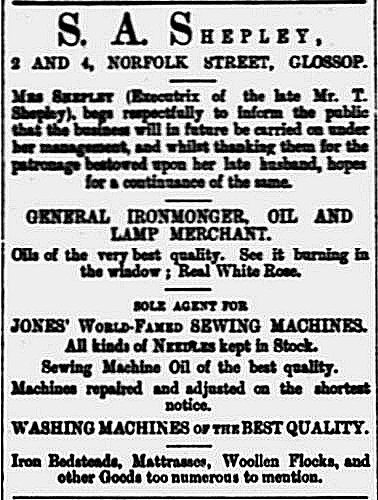
Sarah Ann Shepley's advertisement of 25 December 1886. |

The lower end of Norfolk Street before 1909 as the Railway Hotel/old Conservative Club can be seen. |

Number 4 Norfolk Street when occupied by the Hardings. |

Advertisement for E & G Harding, 1926. |

Advertisement for Ernest Battey, 1928. |
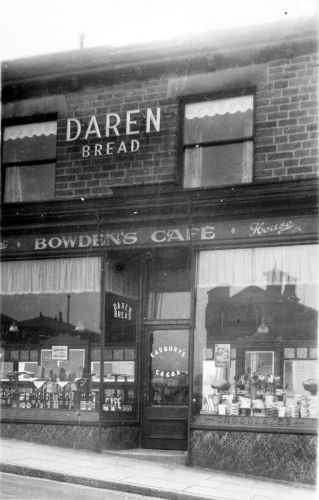
12 Norfolk Street during the time that Bowdens ran it. |
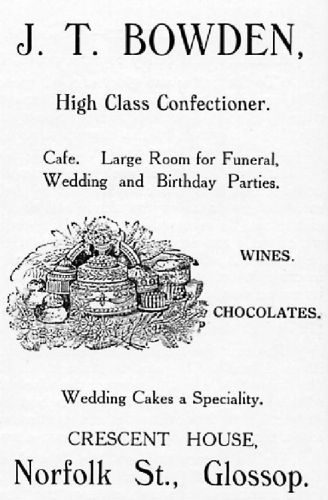
Advertisement for Bowden's Cafe, 1928. |
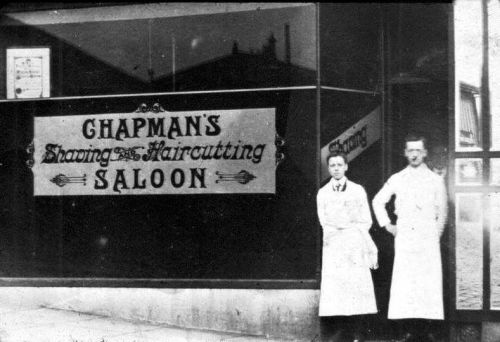
14 Norfolk Street, Chapman Brothers. |

Advertisement for Fred Bradbury, 1904. |
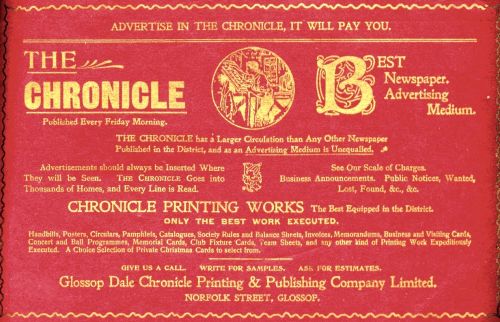
Advertisement for Glossop Chronicle, 1901. |
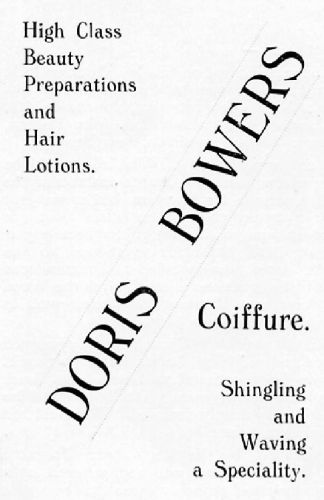
Advertisement for Doris Bowers, 1928. |
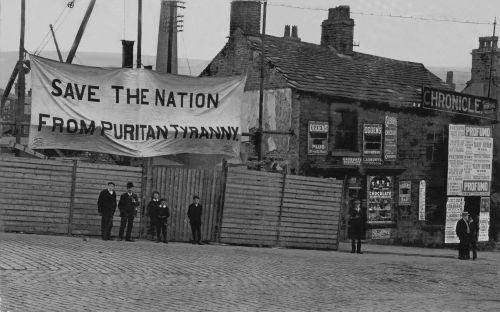
The Conservative club during rebuilding, 1909, with numbers 20 and 18 to the right. |
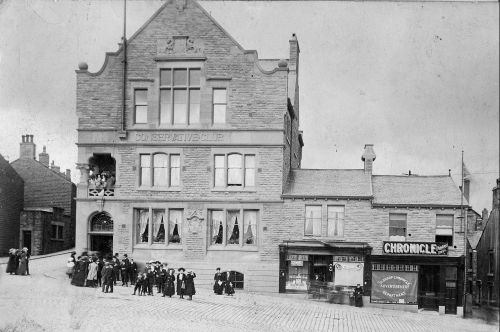
The new Conservative club, 1910, with refurbished numbers 20 and 18 to the right. |
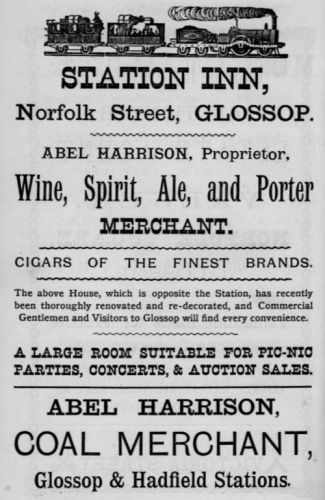
Advertisement for Abel Harrison & the Station Hotel, 1878. |